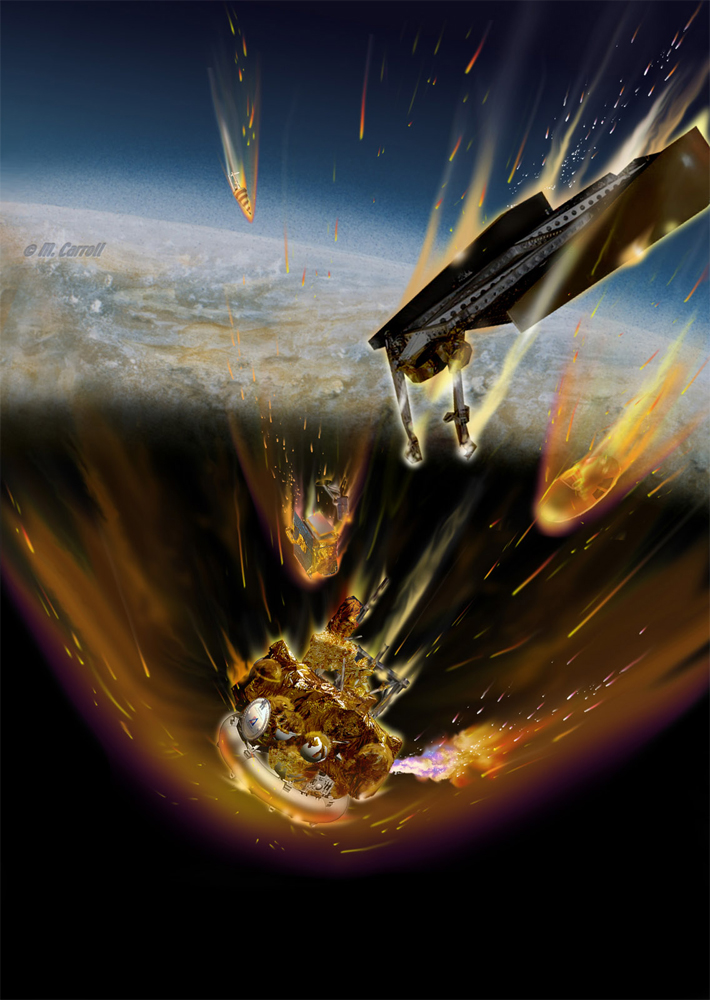Is the US Military Hiding Data on Dead Russian Mars Probe?

In the latest twist in what has become an increasingly mysterious saga, the U.S. military appears to have removed links from a public website for tracking data on a dead Russian Mars probe that fell to Earth and plunged into the Pacific Ocean on Jan. 15, according to media reports.
Breaking with standard practice, the military removed links from the Space Track website, which is operated by U.S. Strategic Command, to information on the defunct Russian Phobos-Grunt spacecraft's predicted re-entry, and did not publish any confirmation of the probe's fall, reported Aviation Week.
On Jan. 12, the Space Track website originally published information on the estimated re-entry track for Phobos-Grunt, a Russian probe that malfunctioned shortly after its November 2011 launch and was stuck in low-Earth orbit for more than two months.
After routine updates and revised estimates over the course of the next two days, the military removed links to these re-entry predictions and did not publish final confirmation data on the spacecraft's fall on Jan. 15, according to Aviation Week.
"There are links to other recent reentries from the past 30 days, six or seven objects, including one that is slated to come down in the next day or so," Brian Weeden, an orbital debris expert at the Secure World Foundation in Washington, D.C., told Aviation Week. [6 Biggest Spacecraft to Fall Uncontrolled From Space]
Now, the website's only statement about the fall of Phobos-Grunt reads, "Information regarding the Phobos-Grunt (SCC# 37872) is being accomplished in a different format. This format is different from standard entries posted to Space Track," reported Aviation Week.
Weeden is a former U.S. Air Force officer, and he once directed the Joint Space Operations Center's orbital analyst training program. He noted that the military's handling of the fall of Phobos-Grunt was unusual.
Breaking space news, the latest updates on rocket launches, skywatching events and more!
"This also appears to run counter to the expressed policy of the U.S. government to improve its data-sharing efforts on space situational awareness, and undermines efforts by other U.S. government agencies such as NASA and the State Department to communicate with the public and other countries on reentries," Weeden told Aviation Week.
Space Track logs data on thousands of pieces of orbital debris and space junk from the extensive catalog put together by the Joint Space Operations Center at Vandenberg Air Force Base in California. The unclassified site is password-protected but has more than 39,000 registered users worldwide.
Phobos-Grunt launched on Nov. 8 on a mission to collect soil samples from the Mars moon Phobos. A glitch shortly after launch prevented the spacecraft from accelerating toward the Red Planet.
After languishing in Earth orbit for more than two months, Phobos-Grunt reportedly fell over the Pacific Ocean on Jan. 15, but conflicting accounts stirred up confusion over where exactly the probe landed. An official statement from the Russian Federal Space Agency reaffirmed the Pacific Ocean landing zone, but also said that this impact area had been determined based on orbital data and that they had no tracking or visual data.
Russian officials have also reportedly claimed that strong emissions from an American radar station on an island in the Pacific Ocean could have accidentally led to the destruction of Phobos-Grunt.
The ill-fated spacecraft has been an embarrassment for Russia, which has now failed 16 out of 20 times to send a successful probe to Mars.
Follow SPACE.com for the latest in space science and exploration news on Twitter @Spacedotcom and on Facebook.
Join our Space Forums to keep talking space on the latest missions, night sky and more! And if you have a news tip, correction or comment, let us know at: community@space.com.

Space.com is the premier source of space exploration, innovation and astronomy news, chronicling (and celebrating) humanity's ongoing expansion across the final frontier. Originally founded in 1999, Space.com is, and always has been, the passion of writers and editors who are space fans and also trained journalists. Our current news team consists of Editor-in-Chief Tariq Malik; Editor Hanneke Weitering, Senior Space Writer Mike Wall; Senior Writer Meghan Bartels; Senior Writer Chelsea Gohd, Senior Writer Tereza Pultarova and Staff Writer Alexander Cox, focusing on e-commerce. Senior Producer Steve Spaleta oversees our space videos, with Diana Whitcroft as our Social Media Editor.

